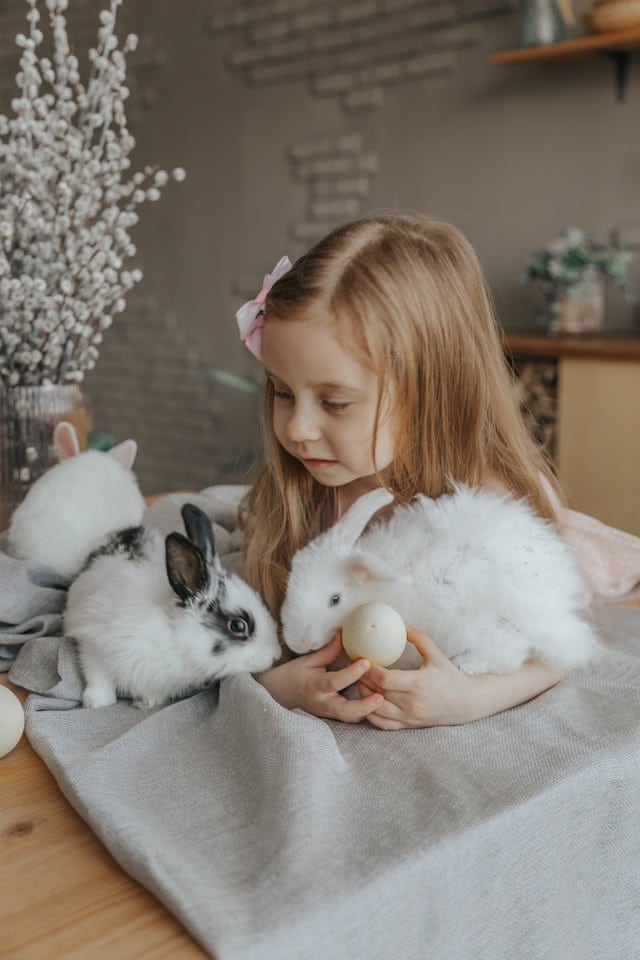How to Identify if Your Pet Rabbit is Overheating and What to Do?

Raising pet rabbits is a joy filled with adorable moments and tender interactions. However, these little animals require vigilant care and good understanding of their unique health needs. One such need is their sensitivity to heat. As doting pet parents, you must be aware of the signs of heat stroke in your rabbit and be prepared with the necessary steps to keep them cool. In this article, we will walk you through the process of identifying and handling overheating in your rabbits.
Identifying Signs of Overheating in Rabbits
Topic to read : How to Equip Your Home for a Pet with Limited Mobility Due to Arthritis?
Source: commons.wikimedia.org, License: creativecommons
Rabbits are sensitive creatures, particularly when it comes to heat. Unlike humans and certain other animals, rabbits cannot sweat to dissipate heat. Instead, they rely on releasing heat from their ears. Thus, if the temperature rises too high for them to handle, your pet rabbit might succumb to a heat stroke.
In parallel : What Are the Benefits of Hydrotherapy for Post-Surgical Recovery in Dogs?
The initial symptoms of heat stroke in rabbits are often subtle and can be easily overlooked if you aren’t paying close attention. Here are few signs to watch out for:
- Your rabbit seems lethargic and is less responsive than usual
- Its appetite has decreased significantly
- It shows signs of excessive panting and rapid breathing
- It has warm ears, a clear sign that your rabbit is struggling to cool down
- Its body temperature is above 103°F (39.4°C). You can check this by using a small animal thermometer inserted rectally.
- If severe, your rabbit may even show signs of confusion, seizures, or loss of consciousness
Recognizing these signs early can be life-saving for your pet rabbit, so stay vigilant, especially during warmer months.
How to Keep Your Rabbit Cool?
Source: commons.wikimedia.org, License: creativecommons
Once you identify the signs of overheating in your pet rabbit, the immediate step is to help them cool off. Here are a few effective measures you can take:
- Move the rabbit to a cooler area, preferably an air-conditioned room.
- Provide fresh, cool water continuously. You can add ice cubes to the water to keep it cool for a longer duration.
- Use a fan to increase air circulation around the rabbit. However, do not point it directly at them as it may cause them to feel too cold too quickly.
- Mist your rabbit’s ears with a spray bottle filled with cool water. Remember, rabbits release excess heat from their ears, so this can help cool them down.
- Offer them chilled fruits or vegetables, but do not force them to eat if they don’t want to.
Professional Intervention for your Pet Rabbit: When to Seek Help?
Source: commons.wikimedia.org, License: creativecommons
While initial measures can help stabilize your pet rabbit, it’s crucial to seek professional help. If the symptoms persist or worsen, take your rabbit to a vet at the earliest.
The vet can provide much-needed medical intervention to bring down the body temperature of your rabbit. This might include administering fluids intravenously or subcutaneously to prevent dehydration. In severe cases, oxygen therapy or other critical care measures may be required.
It’s essential to follow the advice of the vet and provide the necessary care at home. Post-care could include administering prescribed medication, ensuring that the rabbit stays cool, and monitoring its health.
Proactive Measures to Prevent Overheating
Source: commons.wikimedia.org, License: creativecommons
Prevention is the best cure. Consider the following steps to ensure your rabbit stays cool and avoids heat stroke:
- Keep your rabbit in a cool, well-ventilated area, away from direct sunlight.
- Regularly replenish their water supply and ensure it stays cool.
- Use cooling mats or tiles for your rabbit to lie on. Rabbits love to sprawl on cool surfaces.
- Limit exercise during the warmest parts of the day. Encourage play during the early morning or late evening when temperatures are cooler.
In conclusion, while rabbits make wonderful pets, they require vigilant care, particularly in warmer weather. Armed with the knowledge of identifying signs of heat stroke and the necessary steps to cool down your pet, you can ensure a safe and comfortable environment for your rabbit, even in the heat.
Understanding the Risks of Overheating for Rabbits
Source: commons.wikimedia.org, License: creativecommons
Understanding the risks of overheating in rabbits is crucial for rabbit owners. It’s important to note that rabbits are native to temperate climates, so their bodies don’t handle extreme heat well. Overheating can lead to heat stroke, a potentially fatal condition if not quickly and properly attended to.
Unlike humans who can sweat, or dogs that can pant to cool off, rabbits depend on releasing heat through their ears. Therefore, when they’re subjected to high temperatures, they struggle to cool down. If their body temperature spikes above 103°F (39.4°C), it can trigger a heat stroke. This is a serious condition and can cause seizures, organ failure, and even death if not promptly treated.
A rabbit suffering from a heat stroke can show symptoms like lethargy, loss of appetite, excessive panting, warm ears, and an elevated body temperature. In severe cases, the rabbit might exhibit signs of confusion, seizures, or even lose consciousness. It’s vital to keep a vigilant eye on your rabbit, especially during hotter seasons, and take necessary preventive measures to avoid the risk of overheating.
Emergency Steps to Follow if Your Rabbit is Overheating
Source: commons.wikimedia.org, License: creativecommons
Swift and appropriate actions can save your rabbit from the harmful effects of heat stroke. If your rabbit is overheating, it’s important to react quickly while ensuring you don’t cause the rabbit to cool down too rapidly, which can lead to shock.
In the event of overheating, immediately move the rabbit to a cooler area like an air-conditioned room. Make sure to provide fresh, cool water continuously, and you can even add ice cubes to keep it chilled longer. Increase air circulation using a fan, but avoid pointing it directly at the rabbit to prevent a sudden temperature change. You can also mist your rabbit’s ears with cool water to help them release heat quicker.
Offer your rabbit chilled fruits or veggies, but don’t force them to eat if they seem uninterested. Monitor your rabbit closely and if the symptoms persist, seek immediate professional help.
Conclusion
Source: commons.wikimedia.org, License: creativecommons
Caring for a pet rabbit goes beyond offering food and shelter. It’s about understanding their unique needs and ensuring their comfort and well-being in every circumstance. Overheating and heat stroke is a serious concern for rabbit owners, particularly amid the hotter seasons.
Recognizing the signs of overheating and taking swift, appropriate steps can help prevent the dire consequences of heat stroke in your rabbit. In addition to emergency measures, implementing proactive precautions such as providing a cool environment, fresh water, and limiting exercise during hot hours can go a long way in ensuring your rabbit’s overall well-being.
Remember that every pet is unique and requires a specific approach to care. Therefore, it’s essential to understand your pet rabbit’s unique needs and be vigilant to changes that may signal distress or discomfort. Armed with this knowledge, you can ensure that your pet enjoys a safe and comfortable existence alongside you.
